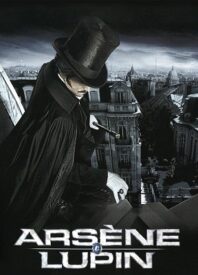
Arsène Lupin (Guillaume Huet) takes up after his father Theophraste (Nicky Naude). This is probably not a good thing, but whatever. After watching his father die under the hands of police for theft, he grows up (Romain Duris) to do the same thing. He returns to his childhood home, where he walks into a meeting of conspirators looking for Ancien Regime era treasures. These conspirators are so close to getting that treasure if it wasn’t for the Countess of Cagliostro (Kristin Scott Thomas) and her frenemy Beaumagnan (Pascal Greggory). The conspirators try to kill her by ocean, but Arsène rescues her, that encounter turning them into lovers. But as the film progresses, Arsène regrets that decision, as Beaumagnan tells him things about the Countess that may be true.
Arsène may have the titular role, but this film is interesting because of its entry into Scott Thomas’ filmography. It comes before The Other Boleyn Girl, where she plays a political player who eventually flops. And it comes after Gosford Park, where she plays a smaller version of the femme fatale archetype that she does here. Here, Arsène and the Countess live on a boat, she asks him for affirmations. And when he gives it to her, he does things that benefit him but may benefit her more. Their scenes are great. They take the viewers away from b-roll and bad nighttime photography that seems to predict the garish way that movies look now. When she’s on screen, she appears like the subject of an Academic or Neoclassical painting.
This film adaptation of Arsène Lupin also exists in contrast to the newer miniseries adaptation. Even if yes, it seems like the superior version. As I already wrote above, I give this movie some credit. After all, it has the same compelling female villain that the source material has. Those of you know who know me personally or through my writing know that I’m partial to female characters. But what’s the point of having a character like the Countess? It seems like after her, the movie stops at one great character of any gender. The Countess has nuance and in comparison, there’s a lack of nuance to Arsène’s other lover. That lover is also Arsène’s former childhood friend Clarisse (Eva Green) who is also the daughter of the noble who was Theophraste’s boss and snitch.
Eva Green usually plays mature characters. Sadly, Clarisse, to my knowledge, is the most infantile character that Green has ever played. Arsène Lupin dresses her and the other characters well. But again, what’s the point of a film with a great production value if characters drown within action set pieces that go on for way too long? I already addressed the bad nighttime photography. And what makes that worse is the CGI that, again, is indicative of the aesthetic of mainstream movies that come two decades after this one. Duris is also at the point of his career when he didn’t know how to make bad dialogue salvageable. With him is Greggory, who didn’t care to salvage a script that neither he nor director Jean-Paul Salome could save.
Watch Arsène Lupin on OVID.
- Rated: TP
- Genre: Action, crime, Mystery, Romance
- Directed by: Jean-Paul Salomé
- Starring: Eva Green, Kristin Scott Thomas, Romain Duris
- Produced by: Stéphane Marsil
- Written by: Laurent Vachaud, Nicolas Saada
- Studio: M6 Films, TF1 Films Production

